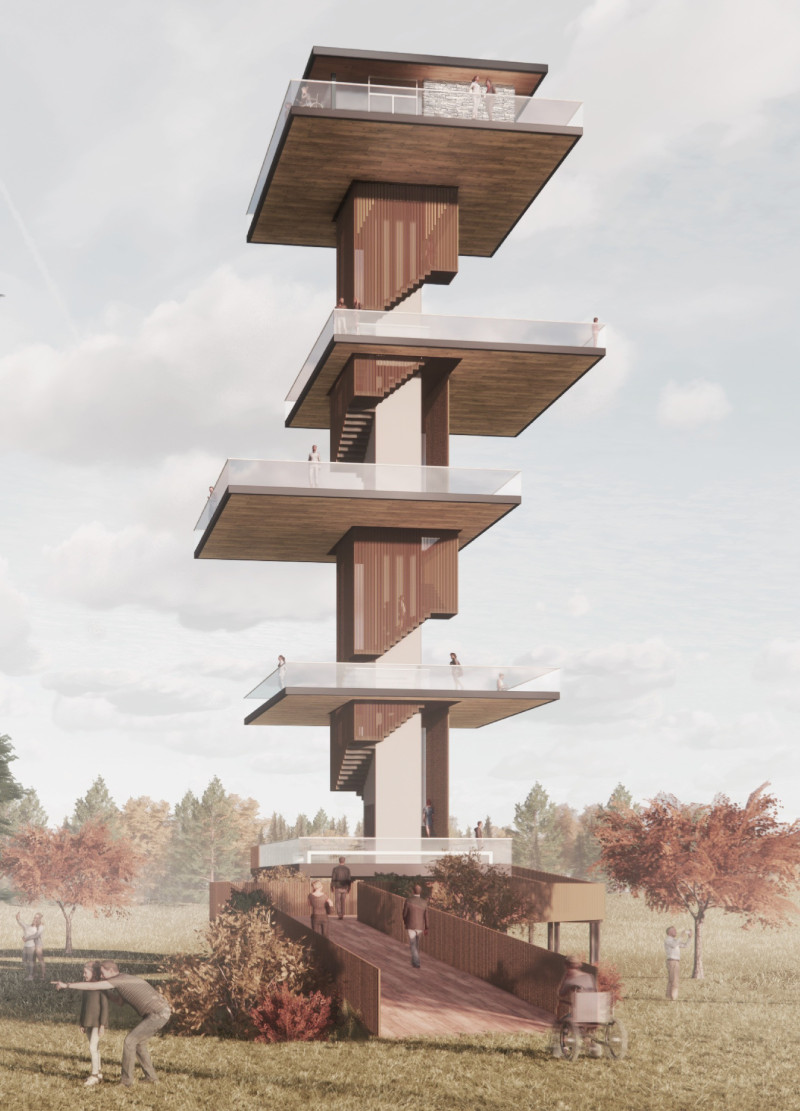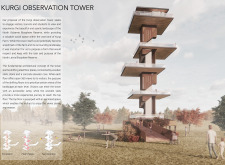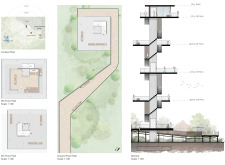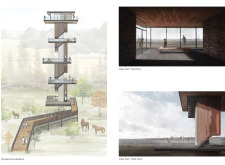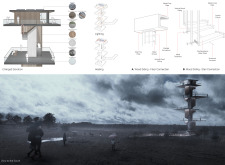5 key facts about this project
The Kurgi Observation Tower is located in the North Vidzeme Biosphere Reserve in Latvia, designed to provide an elevated viewing experience for visitors. Its primary purpose is to encourage an appreciation of the picturesque landscape by offering diverse observational viewpoints. The design focuses on engaging visitors with the surrounding nature, combining functionality with a deep respect for the environment.
Design Concept
The tower features shifting steel floor plates that create open viewpoints, allowing visitors to experience the landscape from different angles. Each level has been carefully planned to highlight specific vistas, making it feel like each ascent reveals a new perspective. This approach transforms the act of climbing into an exploration of the natural beauty around the structure.
Accessibility and Experience
Visitors enter the tower through an accessible ramp, which ensures that everyone can take part in the experience. The ramp helps integrate all individuals into the environment, removing barriers. As visitors ascend, they encounter wooden slats that enhance their journey, providing a tactile connection to nature and making the climb feel more engaging.
Top Floor Enclosure
The top floor offers an enclosed space that protects visitors from the weather while still allowing for full appreciation of the views. This feature ensures that the experience remains inviting and enjoyable, whether in rain or sunshine. The design carefully positions this area to maintain a strong connection to the landscape, creating a refuge above the ground.
Materials and Structure
The choice of steel for the floor plates ensures stability while allowing for flexibility in design. Wooden slats complement the overall structure, adding warmth and a sensory quality to the experience. A concrete elevator core provides durability and support, reinforcing the tower’s innovative design while serving practical needs.
In each detail, the Kurgi Observation Tower emphasizes its connection to the natural world, offering a space that promotes enjoyment and education. Visitors can immerse themselves in the beauty of the biosphere, appreciating how the structure blends with its environment while fulfilling its function.


